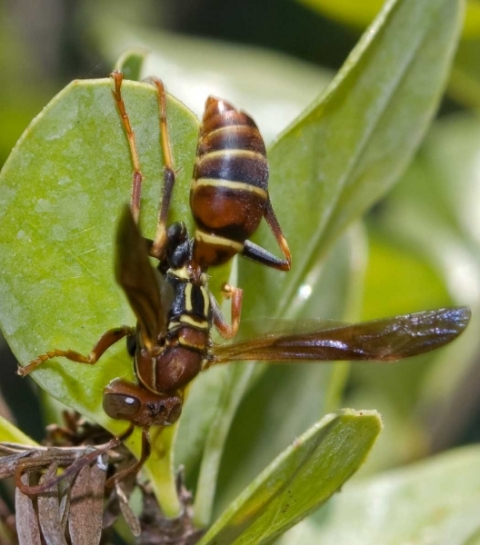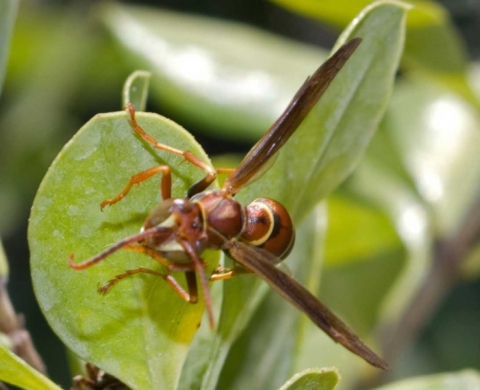Most people are concerned when they see wasp nests on their homes; they fear being stung by enraged little flying beasts. And that fear is, in some small part, justified: when people spray the nests with their pressure washers or with pesticides, they are threatening the lives of these little insects, and it’s understandable that they will do what they can to defend themselves and their progeny.
What many people don’t understand, though, is the beneficial role these creatures play in the ecosystem of their back yard. Many species control harmful insects before they can rise to the level of pest insect; paper wasps specialize in control of soft-bodied insects like caterpillars and grubs. They don’t eat them; they bring them back to the nest to serve as food for their own larvae. Adult paper wasps feed exclusively on nectar, so you’ll often find them on your flowers. They’re not interested in you, so if you just leave them alone, they’ll leave you alone.
However, as one website about social wasps of Florida (it appears to have been abandoned, sadly) notes,
People that have established a butterfly garden may think of them as pests because wasps looking for insect prey do not distinguish between caterpillars that are desirable or undesirable in the garden.
The species of paper wasp in my back yard is Polistes dorsalis:
It’s a very pretty insect, mostly red on the thorax and abdomen, with a few yellow stripes, and black and yellow on the distal portion of the thorax. It has the typical “wasp” waist (petiolate), which many nonwasps mimic as part of their defensive strategy: the more you look like a stinging insect, the more potential predators might decide to leave you alone.
Etymology: the genus name, Polistes, is Greek for “founder of a city,” presumably because these primitively eusocial insects (recall from a previous post that this means that all females are potential breeders; there is no morphologically distinct breeding caste) build colonial nests. The specific name, dorsalis, is Latin for “of the back.”
One thing I have NOT seen, and I’ve been pretty assiduous about looking for it, is a large nest under the eaves of the house. I’ve seen one very small (maybe four-celled) nest that has been around for a year or more, and that’s it. So I’m not too concerned about being overrun by this wasp. Here is a photo sequence from Wikipedia showing a queen of a related species (P. dominula) establishing a colony:




How to get rid of these wasp!They are in my chimney!
Hi, Marsha. Unfortunately, I don’t really have any advice on how to remove them. Good luck!
I would love to send you a picture of what I believe is what you have here. They are using a bee hotel. They never bother me even when I am gardening within a foot of them.